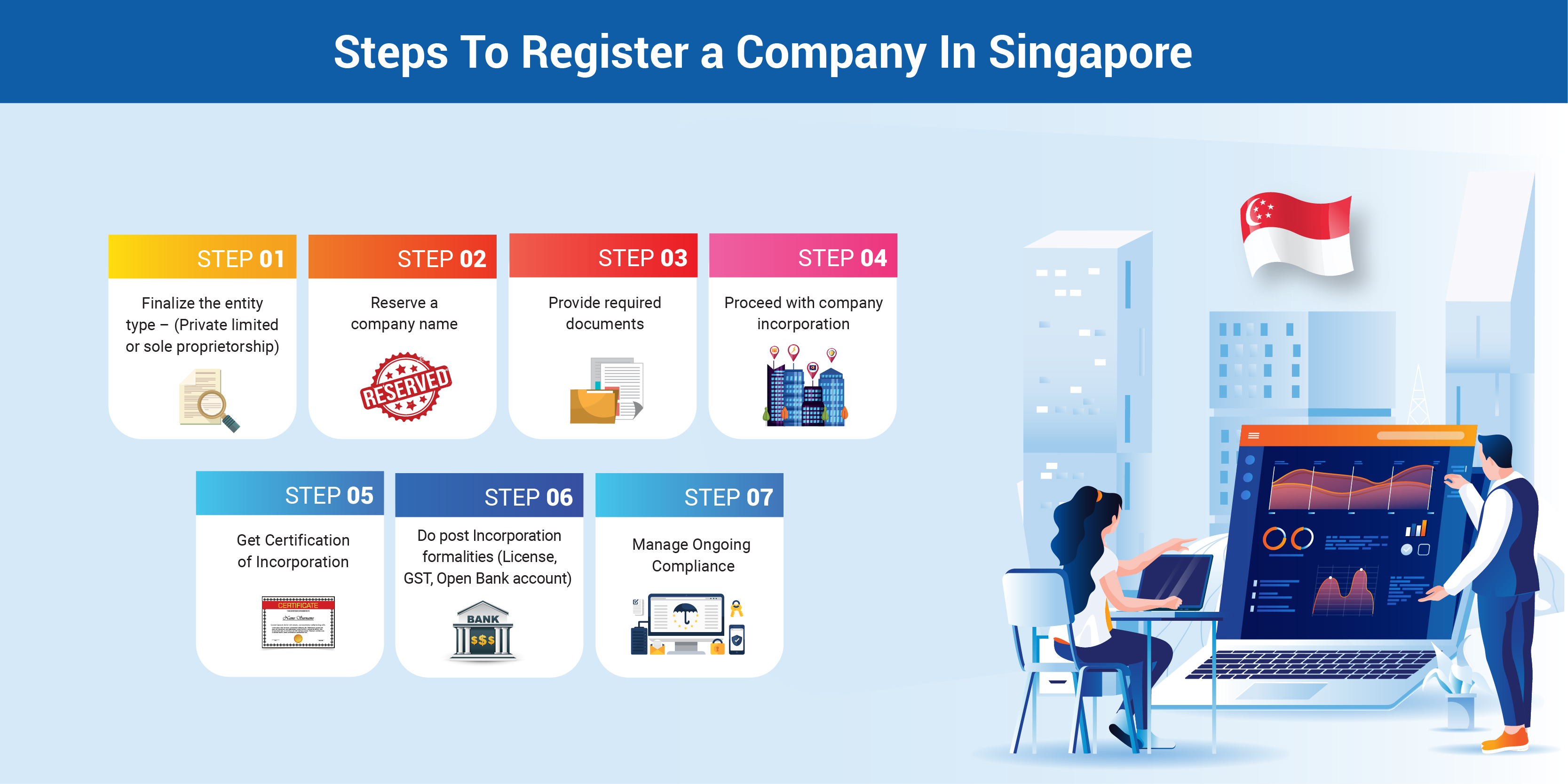Steps to Register a Company in SingaporePosted by John Rikvin on March 2nd, 2020
Singapore has consistently topped the World Bank’s “Doing Business” report that tracks and scores the indicators of the ease of doing business in over 190 countries of the world. Particularly, Singapore’s score for indicators measuring the ‘ease of starting a business’ has always been remarkably high. It is mainly attributable to factors such as quick and easy online registration, the S minimum paid-up capital requirement and low registration fees. The Accounting & Corporate Regulatory Authority (ACRA) supervises the process for company registration in Singapore. The following article is an overview of the ten simple steps to register a company in Singapore. Step to Register a Company in SingaporeStep 1: Finalize the Entity TypeBefore you register the business, it is essential to choose the legal structure that is ideally suitable for the nature of your business and would maximize the tax benefits. As a Private Limited Company entity type involves higher registration cost and complex compliance requirements after registration, first-time entrepreneurs must carefully consider the implications of choosing to register a business as a private limited company. It is not prudent to absorb a compliance obligation and cost structure that is disproportionate to the scale of risks involved or incomes generated by the business. Sole Proprietorship will fit a small business that is less risky and typically operated by the owner himself; as this would have minimal post-registration compliance obligations, the compliance cost is also minimal. However, if the business relies on pooling of funds or other resources by two or more partners who would like to limit their liability, then a Limited Liability partnership would be an ideal choice. Notably, the chargeable profits of these two types of entities would be assessed as the income of the owners and subjected to personal tax rates. A Private Limited Company is the common choice for businesses that have considerable risks, long-term plans, and high profits. This entity type limits the liability of the shareholders to their subscribed share capital, allows the entity to access tax concessions, conveys a credible image and increases the potential to attract more investors or access more financing options. However, the ongoing compliance cost is higher compared to that of a Sole Proprietorship or a Limited Liability Company. Step 2: Choose, Check, Reserve and Register a Company NameNaming your business is undoubtedly an exciting experience. While you may seek suggestion from your associates and well-wishers, choose a name that is relevant to your business in the long run. You have to be mindful of the fact that ACRA will decline registration of names that are undesirable, or identical to any registered to reserved name, or unacceptable as per the direction of the Minister. After you have come up with a list of potential names, check if they are available. It is likely that the names are already reserved or registered by some other company or individuals. This name-checking step will help you to identify and shortlist the names on your list. Read more on how to register a company in Singapore at Rikvin.com. Like it? Share it!More by this author |



